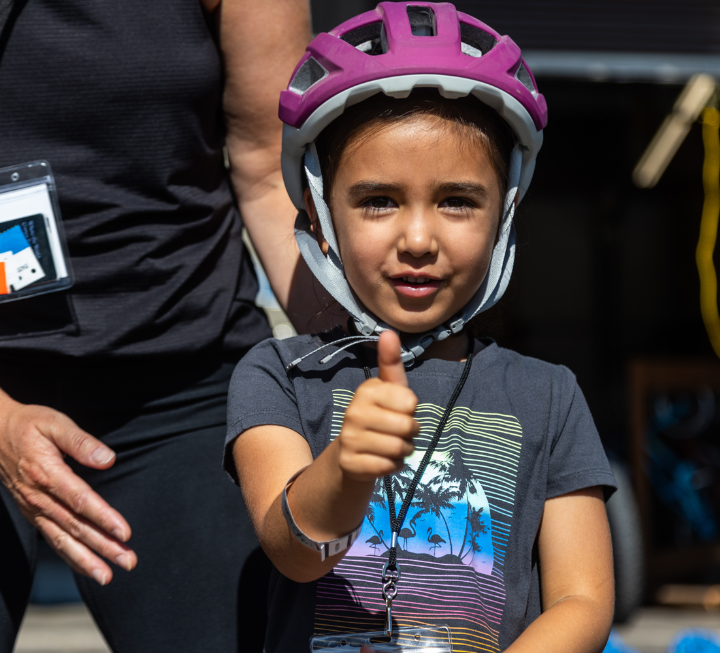Placement is the very last decision that is made about the child. It is made by the IEP team, or in some states, another group of people. It is based on the student’s service needs. In other words, now that the IEP knows what services your child needs, the team must decide where your child will receive those services.
School personnel or parents sometimes decide on the child’s placement before the IEP meeting. Decisions about placement should not be made until the IEP team – which includes the parents – determines the student’s needs, goals, and services.
Placement does not necessarily mean an actual place or physical location but rather the type of placement. The IEP team must consider a continuum of placement options that can meet the needs of each student with an IEP and it must include any needed supplementary aids and services. However, a student does not have to try all the possible placements first.
The continuum of placements, from least restrictive to most restrictive, are:
A range of other options exist, including tutoring centers or home-based tutoring, independent study, magnet programs, alternative schools, Gifted & Talented Education (GATE) and Advanced Placement (AP) classes, charter schools, placement in a private school at parent expense, or homeschooling.
Caution! Choosing certain placements or educational settings may require the parent to sign away their child’s right to a free and appropriate public education.
Certain states have voucher programs. Some of these states require that students relinquish their rights to IDEA and other protections in order to participate in voucher programs. If your state allows your child to retain their IEP rights and other federal protections, and the amount of the voucher equals the average cost of a private/parochial school in your state, this might not be an issue. Check with your state’s Protection and Advocacy organization or consult with a special education advocate. School choice can be a contentious and complicated issue!
What should the team consider when determining the child’s placement?
The team considers the following in making placement decisions:
- the educational benefits available in the regular classroom;
- the non-academic benefits of interaction between a student with disabilities and those without disabilities;
- the impact of the student with disabilities on the teacher and other children in the regular classroom; and
- the cost of supplementary aids and services required for mainstreaming the student (however, placement decisions should be based on the child’s needs, not district budgets and
Your child has the right to an education in the Least Restrictive Environment. This means that the school must ensure that children with disabilities are educated with children who are non-disabled to the maximum extent possible. Special classes, separate schooling, or removing children with disabilities from their regular educational environment happens only if the student’s disability limits their access to the general education setting – even with the use of supplementary aids and services.
The law states that “a child with a disability is not removed from education in age-appropriate regular classrooms solely because of needed modifications in the general education curriculum.” Before moving a child to a more restrictive setting, the team may consider one-on-one aides or paraprofessionals, assistive technology, increased therapy or specially designed instructional minutes, and other supports to help the child remain inside the general education.
Supplementary aids, services, and other supports may be provided to “enable children with disabilities to be educated with non-disabled children to the maximum extent possible” and are designed to help students with disabilities obtain benefit from their education. Teams should consider the full range of supplementary aids and services.
Categories of Supplementary Aids and Services
Environmental/physical
- preferential seating
- altering the physical arrangement of the classroom
- reduced distractions
- a quiet corner or study carrel
- modified equipment or adapted writing tools
- helping to maintain an uncluttered space
- space for movement breaks
Instructional
- teaching to the student’s learning style
- modified materials
- resource room instruction
- alternate method of teaching or content of lessons
- alternate assignments
- notes or study sheets
- books on tape
Staff Supports
- increased staffing
- co-teaching arrangement
- staff development or training
- planning time
- one-to-one aide or paraprofessional
- behavior support professional
Social/Behavioral Supports
- immediate feedback, directions for staying on task
- rest breaks
- behavioral intervention strategies, Positive Behavior Intervention & Supports (PBIS) plan, reinforcement systems
- circle of friends/peer buddies
- counseling, daily check-in with case manager/mentor
- study skills instruction
- visual daily schedule, checklists
- notice or warning before a change in activities, verbal/visual cues regarding transitions
A placement is considered appropriate when it fits the child’s educational, social, and emotional needs in a holistic manner. The team must explain in writing in the IEP the degree to which the student will not participate with typical peers. The goal of the Individuals with Disabilities in Education Act is to start with placement in regular education classes in the school the student would attend if not disabled.
There is extensive research on the benefits of inclusion (or mainstreaming). However, a “more restrictive” environment is sometimes needed for students with significant, complex, or overlapping needs. Some students cannot make academic or functional progress in a general education setting. Keep an open mind. For example, a special school for children with dyslexia may be what your child needs to learn how to read.
Placement is the very last step in the IEP process. Don’t skip to this step until all other steps have been completed!



